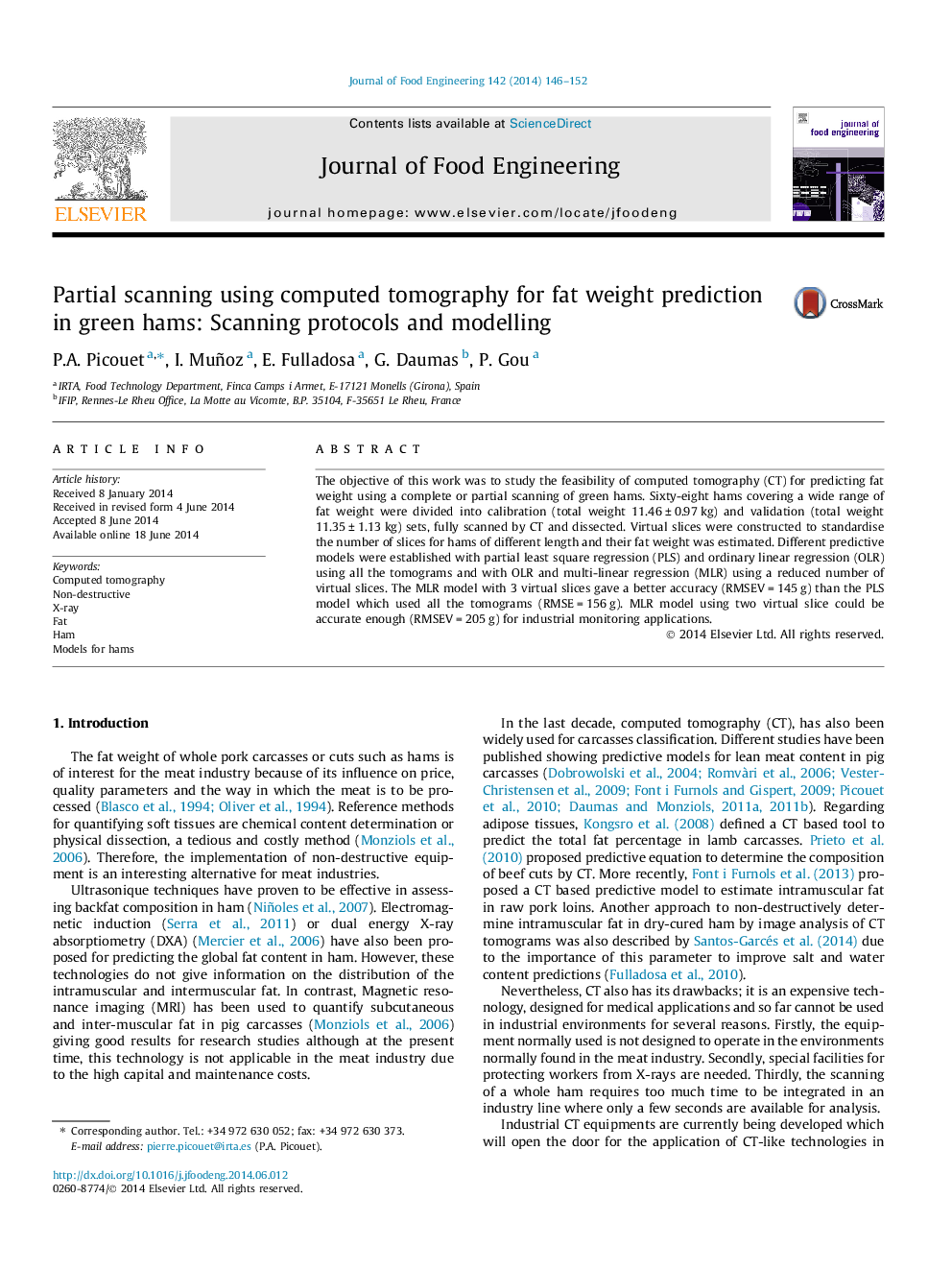| Article ID | Journal | Published Year | Pages | File Type |
|---|---|---|---|---|
| 223098 | Journal of Food Engineering | 2014 | 7 Pages |
•Fat weight prediction models for ham have been developed.•The widest part of the ham and the knuckle area are used for models.•Model using only 3 tomograms gives a good accuracy.•For ham classification purposes, only one tomogram would be sufficient.
The objective of this work was to study the feasibility of computed tomography (CT) for predicting fat weight using a complete or partial scanning of green hams. Sixty-eight hams covering a wide range of fat weight were divided into calibration (total weight 11.46 ± 0.97 kg) and validation (total weight 11.35 ± 1.13 kg) sets, fully scanned by CT and dissected. Virtual slices were constructed to standardise the number of slices for hams of different length and their fat weight was estimated. Different predictive models were established with partial least square regression (PLS) and ordinary linear regression (OLR) using all the tomograms and with OLR and multi-linear regression (MLR) using a reduced number of virtual slices. The MLR model with 3 virtual slices gave a better accuracy (RMSEV = 145 g) than the PLS model which used all the tomograms (RMSE = 156 g). MLR model using two virtual slice could be accurate enough (RMSEV = 205 g) for industrial monitoring applications.
